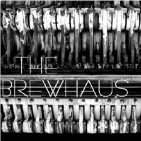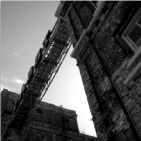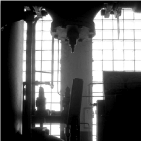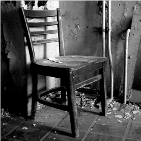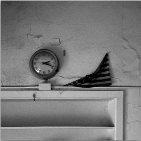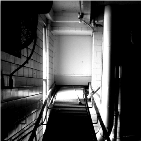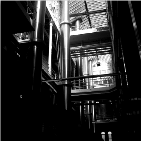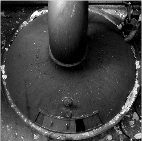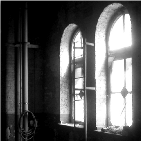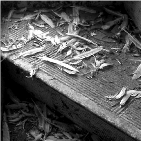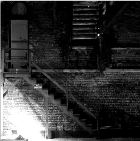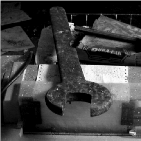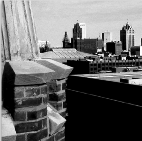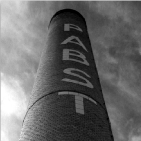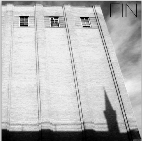
I mentioned in last week's edition of Weekend Reading that I'd be making my way down to the Museum of Science and Industry here in Chicago to see the City of the Future exhibit that displayed the winner (Chicago's own Urbanlab) and finalists from the History Channel's competition of the same name. Which I did.
I'm assuming, since this competition was centered around the US' three largest cities, that the exhibit will travel to New York and LA following its time at the MS&I (which ends on October 7th and features the finalist from each city and all of the Chicago entrants.) I have to rely on assumptions because it's next to impossible to find anything about the exhibit on the web -- it's not even mentioned on the museum's site, nor the History Channel-hosted site of the competition. While one might find such a lack of coverage to be a bit strange in an age of ubiquitous online publicity, I think that I have a pretty good idea as to why the exhibit is a bit quiet.
It is categorically
awful.
I should start out by saying that I'm moderately idealistic about architecture- and planning-related exhibits, especially at publicly-funded museums like MS&I. I have this silly idea in my head that these exhibits should communicate the ideas they are intended to express in a way that can be comprehended by someone with absolutely no background in architecture or planning. I'm all caught up in the idea that museums are places for sparking dialog, for creating interest, for broadening horizons -- in other words, they're places of inspiration. I know, I know: how droll.
While the different competition entrants vary in the plausibility and originality of their ideas (checkered results are to be expected in a contest, after all, in order for there to be a winner) the true failure of this exhibit lies in its curatorial execution. The entry room plays a brief History Channel-produced video about the contest in which the people behind the finalists from all three cities (Urbanlab in Chicago, Eric Owen Moss in LA, and ARO in New York) talk about their proposals, and there is plenty of bland introductory text on the walls -- not to mention a few plugs for sponsors IBM and Infiniti. This setup fails to build much excitement (much less block noise from the corridor from flowing into the exhibit.)
Upon entering the main exhibit room just past the video kiosk, the visitor is greeted, to their right, by Garofalo Architects' competition entry. The model is a mildly interesting collection of images housed in plexiglass boxes, themselves organized into a skyline set in the familiar city grid. What this is supposed to represent, exactly, is lost to the casual museum-goer. The panel describing the entry is so vague that it could easily be mistaken for part of the generic ramblings in the antechamber. This, unfortunately, is more standard than stand-out. While Valerio DeWalt Train, Protostudio, and Dirk Denison Architects' proposals all wind up as focal points on the sheer strength of their creators' ability to communicate their ideas through their models and their own text, most of the other entrants fall short of accessibility due to an utter lack of adequate explanatory text. It is no secret that contemporary architecture favors the abstract when it comes to model-building; my annoyance with this fact aside, responsibility here fell to the curators to communicate the ideas behind the obtuse constructions on display. This was unfortunate.
The true mark of success for a public exhibit is the reaction of the people who are viewing it -- not in the sense of a positive reaction giving the subject merit or value, but in the sense of it provoking
some kind of reaction, positive or negative. That being said, the general atmosphere at the City of the Future exhibit was that of confusion. The room was filled with people wandering about, utterly nonplussed. There were plenty of screaming children at the two tables of blocks that allowed the museum to deem the exhibit "interactive," but of the adults in the room I only heard a few speak. "So
this is the city of the future, eh?" one asked. His partner responded, her disgust nearly palpable, "
What is?"
This was easily the most disappointing aspect of the exhibit. Architecture and planning are both fields that are commonly viewed by the public as aloof and, often, as "the enemy." Planners scatter communities to replace beloved neighborhoods with stark and stale utopian visions. Architects are a major group within the artistic elite that cannot help but roll their eyes at the mere hint of a question about their brilliant design. These tropes, of course, are exaggerations (we hope.) Unfortunately, the opportunity provided by this exhibit for people within these fields to engage the public and generate excitement about the future has been totally lost. And that's a damn shame.
In the end, Urbanlab's proposal of a series of eco-boulevards that would "close Chicago's water loop" by allowing the city to recycle all of its wastewater was the clear and rightful winner of the competition. As was the case with Valerio DeWalt Train et al, Urbanlab's model and other visuals communicate enough about their ideas to actually be inspirational (though panels describing the winning concept again fall short of adding to the experience.) But in the murky sea of the City of the Future exhibit, this proposal looks even better by comparison. So while it does little to improve public opinion of or interest in planning, architecture, and the future of these fields, perhaps this exhibit is not, as I opined earlier, a
total failure. Perhaps its accidental success is in its ability to highlight all the more brightly one truly brilliant concept.

Links:
The Museum of Science and IndusryCity of the Future (History Channel)Weekend Reads (ArchitectureChicago Plus) (contains hard-to-find images of the Valerio DeWalt Train proposal.)
UrbanlabDispatches from a Post-Water Chicago (Pruned) (from whence I jacked the above image...I am not sure from whence they jacked it.)


